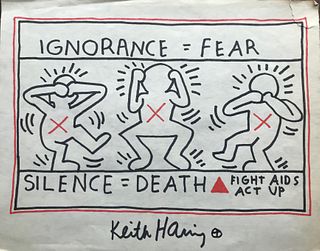Greek Canosan Pottery Standing Nike
Lot 70a
About Seller
Artemis Fine Arts
686 S Taylor Ave, Ste 106
Louisville, CO 80027
United States
Selling antiquities, ancient and ethnographic art online since 1993, Artemis Gallery specializes in Classical Antiquities (Egyptian, Greek, Roman, Near Eastern), Asian, Pre-Columbian, African / Tribal / Oceanographic art. Our extensive inventory includes pottery, stone, metal, wood, glass and textil...Read more
Categories
Estimate:
$3,000 - $4,500
Absentee vs Live bid
Two ways to bid:
- Leave a max absentee bid and the platform will bid on your behalf up to your maximum bid during the live auction.
- Bid live during the auction and your bids will be submitted real-time to the auctioneer.
Bid Increments
| Price | Bid Increment |
|---|---|
| $0 | $25 |
| $300 | $50 |
| $1,000 | $100 |
| $2,000 | $250 |
| $5,000 | $500 |
| $10,000 | $1,000 |
| $20,000 | $2,500 |
| $50,000 | $5,000 |
| $100,000 | $10,000 |
| $200,000 | $20,000 |
About Auction
By Artemis Fine Arts
May 10, 2018
Set Reminder
2018-05-10 10:00:00
2018-05-10 10:00:00
America/New_York
Bidsquare
Bidsquare : Fine Ethnographic / Asian / Ancient Art
https://www.bidsquare.com/auctions/artemis-gallery/fine-ethnographic-asian-ancient-art-3213
Featuring antiquities from around the world including Pre-Columbian, Tribal, Classical, Asian, so much more! Artemis Fine Arts info@artemisfinearts.com
Featuring antiquities from around the world including Pre-Columbian, Tribal, Classical, Asian, so much more! Artemis Fine Arts info@artemisfinearts.com
- Lot Description
Magna Graecia, Apulia, Canosan Hellenistic Period, ca. 3rd century BCE. A standing terracotta figure of the goddess Nike, portrayed partially wrapped in a himation, holding a dove in one hand and a bottle in the other. Her dramatic headdress and large wings are carefully portrayed by the artist. Canosa, or Canosion as it was known then, was a major center of the ceramics and pottery trade when it was a Greek polis. It produced truly unique pottery, completely different in decoration style (although not in shape) from earlier and neighboring traditions. The clay is buff, with the pigment applied directly to it without the use of slip, as you can see here, especially with the bright pink pigment on the hair and himation. Size: 3.25" W x 7" H (8.3 cm x 17.8 cm); 7.15" H (18.2 cm) on included custom stand.
Ceramic figures like this one played an interesting role in Canosan funerary practices. They were placed into Canosan tombs as replacements for large red-figure kraters from the century before. First, mourners carried the figures in funerary processions and kept them present while they carried out rituals at the tomb. Almost all of the statues known from Canosan tombs are women, representing goddesses or mourners - in this society, young women played a major role as mourners. The Canosans, like other members of Classical society, believed that the spirits of the dead remained at the tomb and watched over the living. Canosan tombs were re-opened frequently to bury members of the same lineage, and so these figures were probably reused as well, maintaining the connection between the living and the dead.
Provenance: ex private Cypress, Texas, USA collection
All items legal to buy/sell under U.S. Statute covering cultural patrimony Code 2600, CHAPTER 14, and are guaranteed to be as described or your money back.
A Certificate of Authenticity will accompany all winning bids.
We ship worldwide and handle all shipping in-house for your convenience.
#132706One wing has been reattached. Nice original pigment remaining.Condition
- Shipping Info
-
All shipping is handled in-house for your convenience. Your invoice from Artemis Gallery will include shipping calculation instructions. If in doubt, please inquire BEFORE bidding for estimated shipping costs for individual items.
-
- Buyer's Premium



 EUR
EUR CAD
CAD AUD
AUD GBP
GBP MXN
MXN HKD
HKD CNY
CNY MYR
MYR SEK
SEK SGD
SGD CHF
CHF THB
THB














